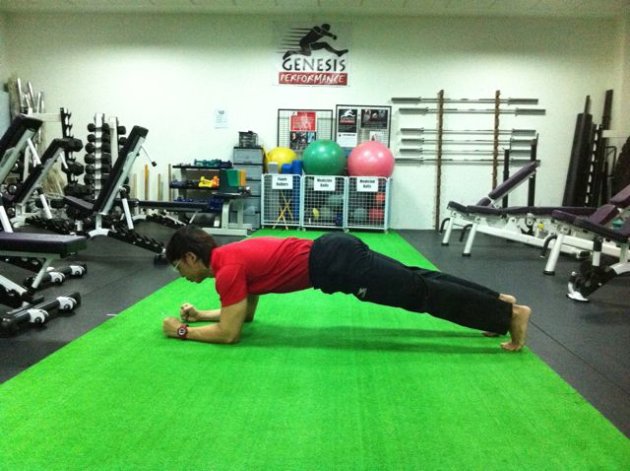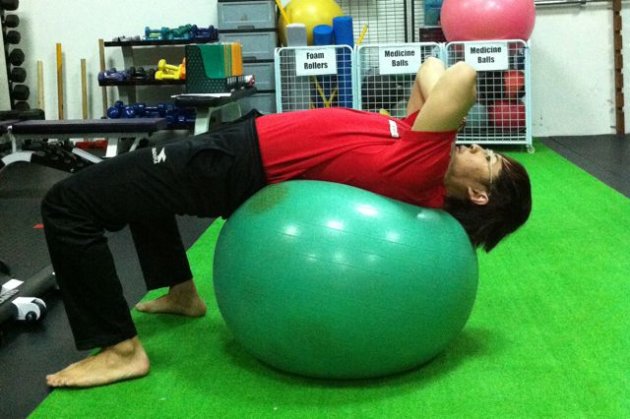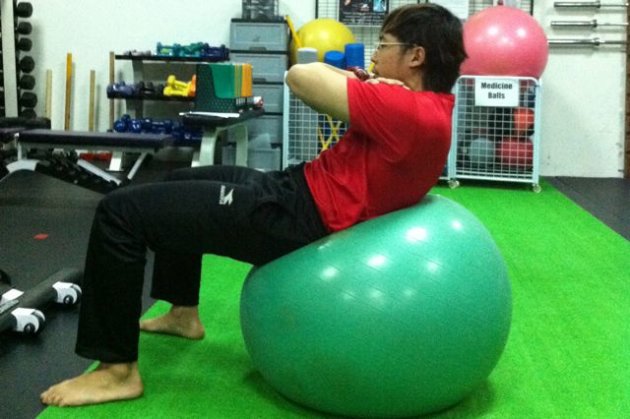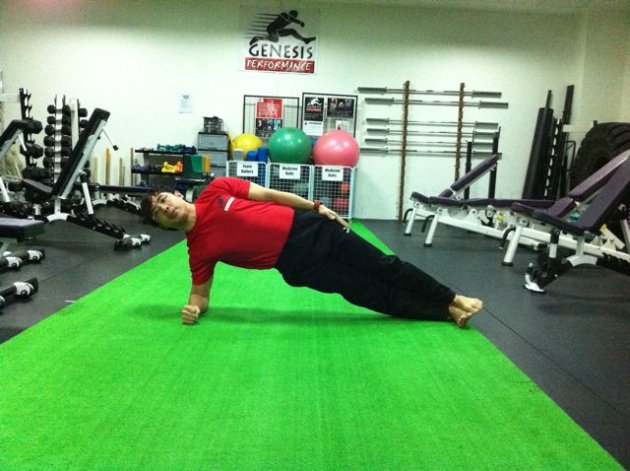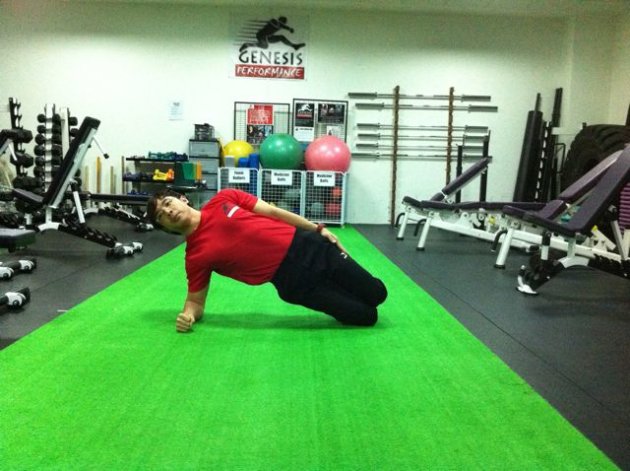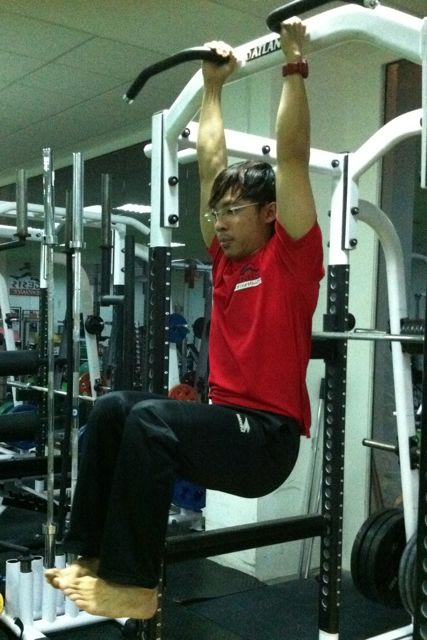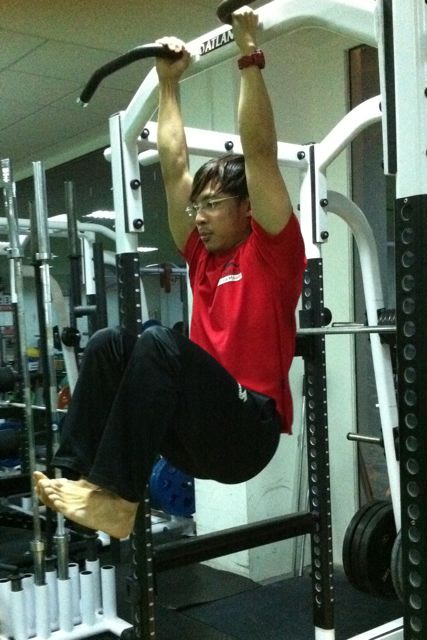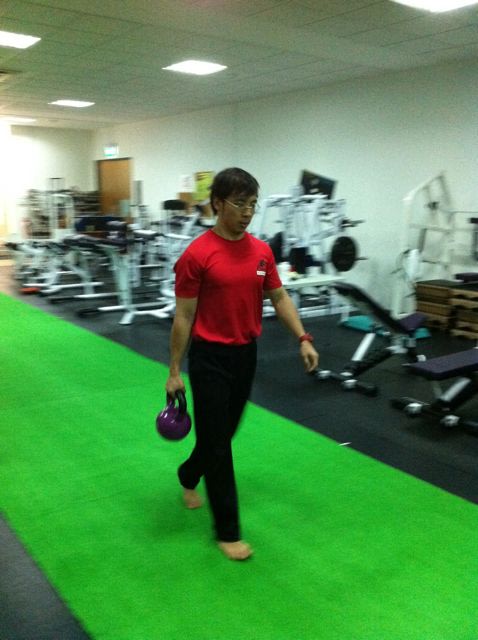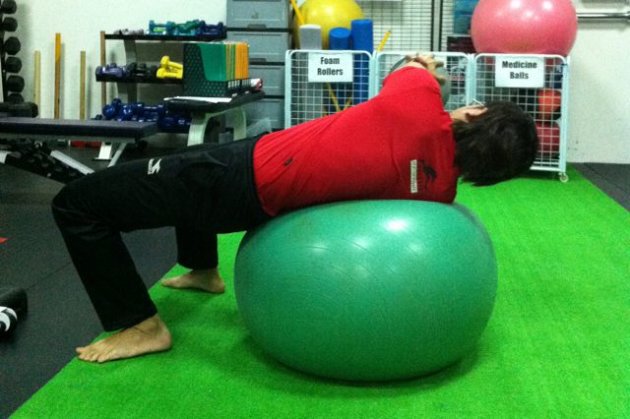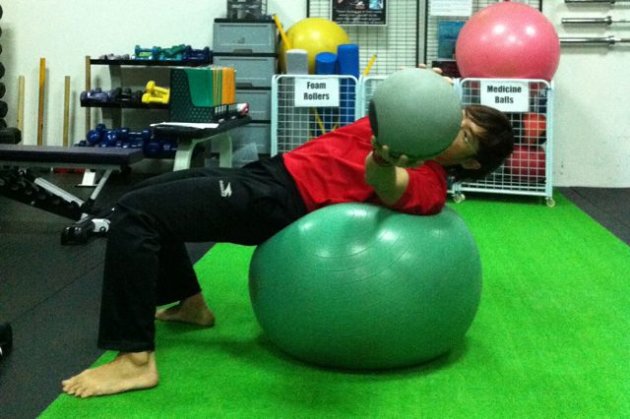By
Michael Esco, PhD, CSCS
WebMD Feature
Preparing the body “not only for the known, but also the unknown” is
the mantra for CrossFit, one of the fastest growing strength and
conditioning programs today. It is not a traditional, specialized
training program like doing isolated weight lifting for a certain muscle or aerobics.
“Our specialty is not specializing," says CrossFit founder and former gymnast Greg Glassman.
It's also a very tough workout
-- not one to take lightly, especially if you're not active right now.
Here's what you should know before you get started.
What is CrossFit?
CrossFit combines strength training
, explosive plyometrics,
speed training, Olympic- and power-style weight lifting, kettle bells,
body weight exercises, gymnastics, and endurance exercise.
By doing this, CrossFit targets what it calls the major
components of physical fitness: cardiorespiratory fitness, stamina,
muscular strength and endurance, flexibility, power, speed, agility,
balance, coordination, and accuracy.
Training the CrossFit way requires you to work out 3 to 5 days
per week. The workouts are highly intense and short, taking about 5 to
15 minutes to complete.
CrossFit workouts typically combine explosive exercises done in a
circuit format: One exercise follows right after the next, with very
little rest in between.
The main CrossFit exercises involve the whole body and include pushing, pulling, running, rowing, and squatting.
There are hundreds of CrossFit exercises. Here are a few examples:
-
Power Cleans: Pulling a weighted bar from the floor and bringing it up to and in front of your shoulders in a quick and forceful manner.
-
Burpees: This is a body-weight-only exercise that
involves beginning in a standing position, quickly dropping to the floor
and doing a push-up, then coming up to a squatting position and
explosively jumping straight-up.
-
The Snatch: A weighted bar is rapidly pulled from the floor to directly over your head with the arms held straight.
-
Thruster: This exercise begins with standing upright with
weighted bar held in front of your shoulders. You squat down to the
point where your thighs are parallel to the floor, then quickly standing
back-up and pressing the weighted bar over your head.
Other examples are variations of push-ups, sit-ups, and pull-ups.
CrossFit also often uses kettle bells (a weighted bell with a handle on
top), medicine balls, climbing ropes, jump ropes, and rowing machines.
The CrossFit WOD
CrossFit posts a Workout of the Day (WOD) on its web site. Some
of the WOD are specially named after women or military heroes. The WOD
changes each day and there are a lot of them. And they can be quite
demanding.
-
The Barbara involves five circuits of 20 pull-ups, 30
push-ups, 40 sit-ups, and 50 body weight-only squats performed in order,
while only resting at the end of each circuit for a 3-minute period.
-
The Angie - 100 pull-ups, 100 push-ups, 100 sit-ups, 100
bodyweight-only squats to be accumulated (not performed in a row, unless
you are fit enough) during the entire workout.
-
The Murph - a timed 1-mile run, followed by 100 pull-ups, 200 push-ups, 300 body weight squats, finished off by another 1-mile run.
-
The Jackie - 1,000 meter row, 50 thrusters with a
selected weight, and 30 pull-ups: preferably performed without any rest
between each exercise.
The CrossFit program can be performed in two ways: on your own or at a CrossFit affiliate.
Going at it on your own requires a base level of good physical
fitness, as well as knowing how to safely perform each movement. The WOD
can be done at almost any fitness facility or at home, if you have
certain pieces of exercise equipment.
Details on how to set-up a CrossFit “Garage Gym” can be found on the
CrossFit web site, which also has an extensive video library that shows
the proper technique for all of the exercises.
If you are not comfortable doing CrossFit by yourself or you want
extra motivation from performing the workouts in a group setting, then
you can join a CrossFit affiliate; there are about 2,500 locations
worldwide.
CrossFit affiliates are not your typical health and fitness
clubs. You will not see the endless supply of cardio equipment or
resistance machines, and members don't perform their own personal
routines.
Instead, it’s a warehouse-like facility where the exercise
equipment consists of a bunch of bumper-plated Olympic weights,
plyometric boxes, medicine balls, dumbbells, and kettlebells. Pull-up
bars, climbing ropes, gymnastics rings hang from the ceiling. The only
cardio equipment you’ll see are rowing machines. If you want to run, hit
the road of the surrounding area. The workouts are completed in a group
setting. Everyone does the same WOD and it’s probably a different daily
workout than what's on the web site.
Each affiliate has a one-month initiation course, which newcomers
must complete to learn proper training technique for all of the major
exercises performed in CrossFit’s program.
For a few days after a CrossFit workout, you may experience a
certain degree of muscle soreness. If that happens, you might need to
rest a day or two before the next WOD so that your muscles are fully
recovered.
CrossFit: Nutrition
CrossFit recommends a daily eating plan of approximately 40% carbohydrates, 30% protein,
and 30% fat. This can be accomplished by consuming “meat and
vegetables, nuts and seeds, some fruit, little starch, and no sugar," as
recommended by CrossFit. This approach is similar to that of popular fad diets
such as the Zone
and Paleo
nutrition plans.
The CrossFit Nutrition plan was not developed by a registered
dietitian. Most importantly, it will not fulfill the dietary guidelines
from the U.S. Department of Agriculture (USDA). It offers lower
carbohydrate consumption and a higher protein intake than what is
recommended for active people by the American Dietetic Association,
which is the leading organization for nutritional-based research.
CrossFit: Advantages
CrossFit workouts are highly intense and do not take a long time
to complete. You can get a great workout in a short period of time.
Athletes and ex-athletes will enjoy the challenges of each WOD, as they are similar to sports conditioning.
There are a large number of WOD routines and they are always
changing. This adds to the excitement of each CrossFit workout and
decreases the risk of becoming bored.
The WOD can be done at home, without a lot of expensive
equipment. The exercises can be very tough. However, there are a number
of videos and written descriptions on the web site that can help you
modify each movement according to your current level of fitness.
You do not have to be a member of an affiliate to view the free
CrossFit web site. However, subscribing to the online CrossFit Journal
costs $25 a year.
Bodybuilders and powerlifters will not get the results they need
for their specific competitive purposes by just performing CrossFit. But
these types of athletes may benefit from training this way for brief
periods during their off-season, for the sake of variety.
Marathoners, triathletes, cyclists, and long-distance swimmers
should dedicate most of their training time on their sport's specific
needs. However, CrossFit may be a good way endurance athletes can train
with weights and not interfere with their main objectives, due to the
short amount of time needed to complete each WOD.
Also, there are alternative CrossFit programs dedicated to endurance sports, football, and gymnastics.
CrossFit is a good way for mixing up the common exercise routine by providing variety.
CrossFit: Concerns
The possibility of injury is an increased risk with participation in anyhigh-intense
fitness regimen like CrossFit, especially if you are new to
Olympic-style weight lifting and plyometric workouts, or have a previous
injury. Not only are the exercises themselves risky, but performing
them under a fatigued state, such as during an intense circuit,
increases the risk of injury even further.
WARNING: A very serious, yet rare muscular injury known as rhabdomyolysis is also a major concern with participation in vigorous exercise. In
short, rhabdomyolysis is a condition in which skeletal muscle becomes so
severely damaged that it rapidly breaks down. If this happens, muscle
cells may rupture and important contents could leak out into the
bloodstream, eventually damaging the kidneys
even to the point of kidney failure. It must be treated in a medical facility as it is potentially life threatening.
Symptoms of rhabdomyolysis depend on severity but can include
general weakness, extreme stiffness, soreness and swelling of the
affected muscle, and abnormally dark colored urine. There are a number
of factors that can cause rhabdomyolysis (e.g. alcoholism
, genetics, dehydration), but it can be brought on by extreme physical exercise.
To prevent rhabdomyolysis, make sure you start slow and gradually
increase the intensity of each workout. Drink plenty of water, and
avoid exercise in a hot and humid environment.
If you are interested in CrossFit but are new to weight lifting or
exercise in general, you should visit a CrossFit affiliate to receive
the necessary personalized attention before attempting a WOD on your
own.
If you take that route, however, be aware that the CrossFit coach
may not have an appropriate educational background in sports
conditioning. Strength and conditioning specialists spend years learning
proper technique of explosive exercises and some have degrees in
exercise science, biomechanics, or kinesiology.
Make sure you ask about credentials and references for any coach
or personal trainer who is responsible for teaching you proper lifting
technique. Be sure to let them know if any exercise makes you feel
uncomfortable or causes pain.
It's best to have a sufficient strength base before starting a
high-intensity, power-based training plan. If you are not strong enough
to perform a certain exercise by itself, let the coach know so he/she
can modify the regimen accordingly.
CrossFit is mostly suited for healthy people who enjoy vigorous
exercise. People with injuries, health conditions, or other special
needs should follow the specific guidelines for physical activity
recommended by the American College of Sports Medicine.
CrossFit claims that the system is “empirically driven and
clinically tested” which insinuates that the methods are scientifically
supported. A review of the current scientific literature, however, shows
no published studies about CrossFit in top-rated peer-reviewed strength
and conditioning or exercise physiology research journals.
CrossFit: Bottom Line
Like most other exercise routines, CrossFit has advantages and
concerns. The workouts are fast-paced, challenging, and constantly
varied.
If you are healthy and can endure grueling workouts, then give it
a try. You will probably enjoy it, just like most “Crossfitters.”
If you are out of shape or just beginning an exercise program
,
be sure to join a CrossFit affiliate to receive the appropriate
personalized attention. Check with your health care provider before
starting any new fitness program, especially if you are not active now.
Michael R. Esco, PhD, CSCS, HFS, is an assistant professor in
the department of physical education and exercise science at Auburn
University Montgomery in Montgomery, Ala. His opinions and conclusions
are his own.

























